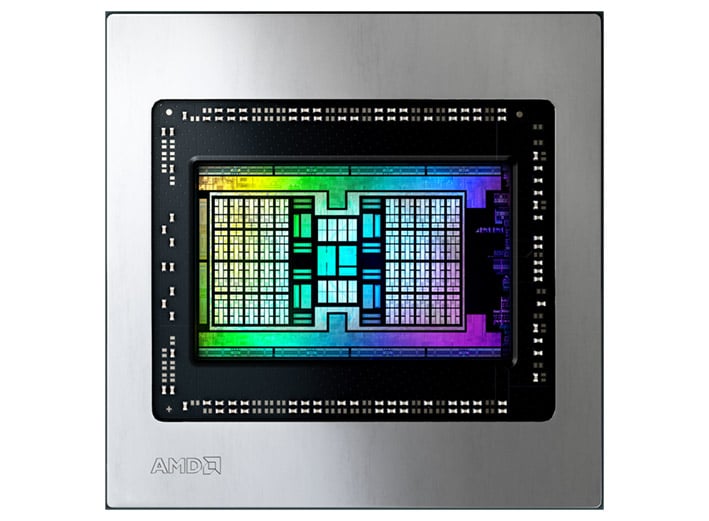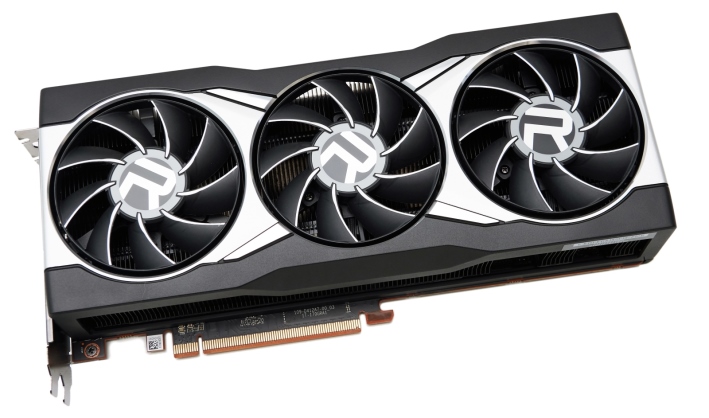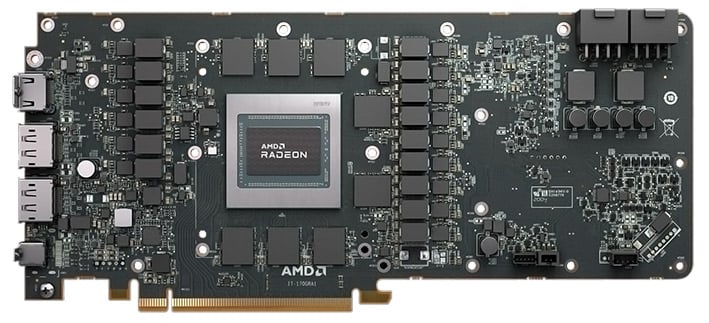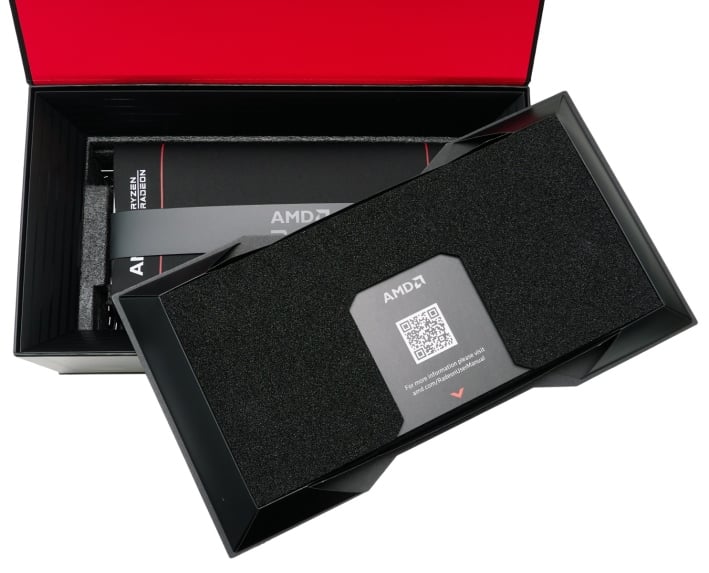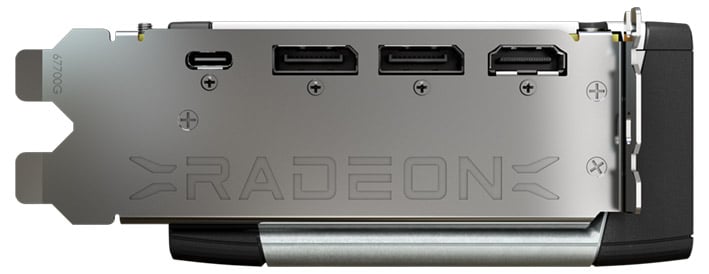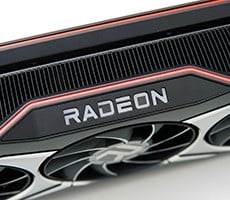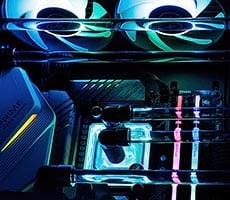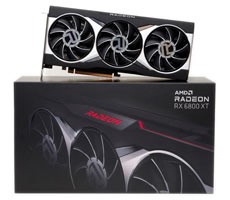Radeon RX 6900 XT Review: AMD's Most Powerful Gaming GPU Ever
If you recall, the Radeon RX 6900 has more compute units than the Radeon RX 6800 XT, more texturing performance, and a special binned GPU AMD called “the best of best” to ensure maximum efficiency and higher sustained clocks. You wouldn’t know it upon first inspection though, because the Radeon RX 6900 XT looks exactly like the Radeon RX 6800 XT, but underneath its familiar exterior, the 6900 XT features a fully-enabled Navi 21 GPU.
Here’s a quick comparison between AMD’s top-end GPUs from the last few generations of 7nm products, to give you all the 10,000 foot view. Take a peek at the speeds and feeds and then we’ll dig in a little deeper to find out what AMD’s flagship Radeon RX 6900 XT is all about.
|
Before we dig into the nitty-gritty, we strongly suggest checking out our Radeon RX 6800 and Radeon RX 6800 XT launch article. In that piece, we provide additional details regarding the Navi 21 GPU and the RDNA2 architecture at the heart of the Radeon RX 6000 series. We discuss the new Infinity Cache and the GPU’s new cache hierarchy, the new Compute Units (CU) and their integrated Ray Accelerators, and Smart Access Memory (SAM), among many other aspects of the product. If you’d like the additional technical detail, you’ll find it all there – we won’t be rehashing it again here.
As we’ve mentioned, the Radeon RX 6900 XT built around a fully-enabled Navi 21 RDNA 2-based GPU, which is manufactured on TSMC’s 7nm process node. The GPU is comprised of roughly 26.8 billion transistors and has a die size of 519mm2. That’s a much bigger chip than what powers the current Radeon RX 5700 XT, which is 10.3 billion transistors with a relatively paltry 251 square millimeter die. It’s bigger than the 13.2 billion transistor Vega-based Radeon VII too.
According to AMD, the overarching goal of its RDNA 2 architecture was to boost performance and efficiency and help push AMD back into a competitive position at the high-end of the gaming GPU market. To pull it off, RDNA 2’s compute units offer double the performance (or more) of the CUs in the original Navi-based Radeon RX 5700 XT, with an approximate 50% performance-per-watt uplift. In addition, RDNA 2 offers a leading-edge feature set that includes support for DirectX 12 Ultimate and all that comes with it, including Variable Rate Shading, Mesh Shaders, Sampler Feedback, and ray tracing. Microsoft’s DirectStorage API, for faster game loading direct from SSD to GPU memory, will be supported as well, though it will take a while before support for DirectStorage arrives in PC games.
The full configuration of the Navi 21 GPU powering the Radeon RX 6900 XT features 80 CUs. The Radeon RX 6800 and Radeon RX 6800 XT have the same physical GPU at their core, but scaled down to address lower price points.
The Radeon RX 6900 XT stands alone at the top of AMD’s gaming GPU stack. Like its little brothers, the 6900 XT features 128MB of Infinity cache and 16GB of GDDR6 memory attached to the GPU over a 256-bit interface, offering up to 512GB/s of peak memory bandwidth. With its 80 CUs, the GPU has a total of 5,120 stream processors – up from 72 CUs and 4,608 stream processors in the 6800 XT. The Radeon RX 6900 XT also features 128 ROPs.
The Radeon RX 6900 XT’s game and maximum boost clocks are similar to the 6800 XT’s. Its game clock should hover around 2,015MHz and the Boost clock 2,250MHz. AMD claims that they’ve binned the GPUs on the 6900 XT, however, to ensure they’re using the best-of-the-best and that they’ll operate at a more aggressive frequency / voltage curve. Although it has more CUs and the card should maintain somewhat higher clocks across the curve, it does so at slightly lower voltages. As such, though it's more powerful, the Radeon RX 6900 XT has the same rated board power as the 6800 XT. The additional CUs also mean increased compute performance over its siblings, to the tune of 23.04 TFLOPS of single-precision compute performance (46.08 TFLOPS half-precision).
All of the cards in AMD’s Radeon RX 6000 series have similar designs, with a stylized cooler featuring triple axial fans, mounted inside a die-case aluminum shroud. A die-cast aluminum frame and backplate add some structural rigidity and help aid in cooling as well. That shroud sits atop a massive vapor chamber that runs the entire length of the PCB. The only difference between the coolers on the cards in the Radeon RX 6000 series is their height – the Radeon RX 6800 is two-slots wide, while the Radeon RX 6800 XT and 6900 XT you see here are two-and-a-half slots. The heatsink fins and shroud are simply taller on the higher-end cards, to add some additional surface area. All of the cards are the same length and height (267mm x 120mm), however.
The Radeon RX 6900 XT is built on a 14-layer PCB, with four 2oz copper layers, and 15 power stage phases – two of which are dedicated to the memory. The cards feature dual, standard 8-pin PCI Express power connectors and built-in RGB lighting controls. Although perhaps not quite as elegant as the cooling solution on GeForce RTX 30-series Founders Edition cards, the Radeon RX 6900 XT is easily the most premium graphics card AMD has produced to date in our opinion.
When we first got our hands on the AMD Radeon RX 6800 and RX 6800 XT, the software for controlling the latter’s built-in RGB lighting wasn’t quite ready for prime time. We did get the software in time for the launch of the Radeon RX 6900 XT though...
AMD’s Radeon RGB controls are clean and straightforward. Users can choose from and array of lighting modes, and pick any color in the rainbow. The individual Red, Green, and Blue channels can be altered, along with the brightness and speed of any effects.
We should also mention an addition to the Radeon RX 6900 XT’s bundle. Although the boxes look similar, save for the model number branding, the Radeon RX 6900 XT comes wrapped in a slick, oversized Radeon mousepad. Underneath the lit pack, there’s a Radeon “R” Cherry MX compatible keycap included too.
Ports on the Radeon RX 6000 series include a single HDMI 2.1 out with Fixed Rate Link (FRL) support, dual full-sized DisplayPorts (1.4), and a USB Type-C connector. FRL is part of the HDMI 2.1 spec and enables higher uncompressed resolutions above 4K60, in addition to peak bandwidth of up to 48Gbps.
And now for what you’ve all been waiting for – some benchmarks...



